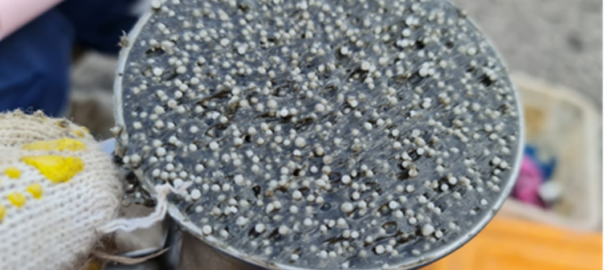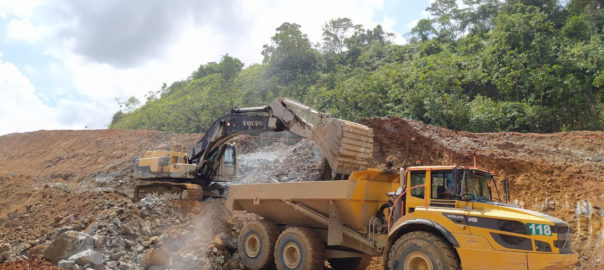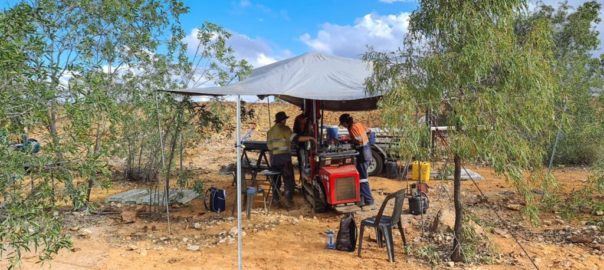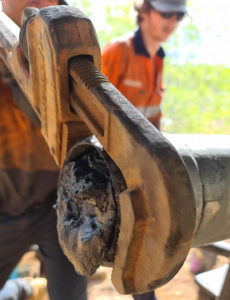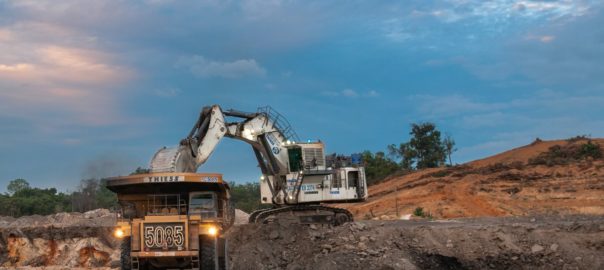Omnia Group mining division company BME has been sharing its leading technical expertise at the 12th World Conference on Explosives and Blasting recently held in Dublin, Ireland, with a solution to eliminate ammonium nitrate (AN) coating agent residue – also called floc – during the production of emulsion causing a stir, it says.
Hosted by the European Federation of Explosives Engineers, the three-day conference drew over 500 delegates globally from among explosives users, manufacturers, drilling equipment operators, researchers and professionals involved in mining and construction.
Included in the Technical Development theme of the conference, the aforementioned paper was written and presented by Garfiansyah Rayes, Berbudi Utomo and Ngisomuddin of BME’s Indonesian office.
“We chose this topic because floc is a common challenge for emulsion producers in southern Asia, and compromises the performance of the final product,” Rayes, who is Technical Service Engineer at BME Indonesia, said. “The presence of floc within the oxidiser mixture poses significant risks to various aspects of our operations, including production, product quality, safety, environmental impact and customer satisfaction.”
For these reasons, the solution described in BME’s presentation raised considerable interest among conference delegates – as it could help to solve various related challenges, he noted. The methodology that the authors explain is not common in Southeast Asia in general, although it is well used in Europe and the US.
“The emulsion manufacturing process involves the blending of water, AN prill with coating agent, and other chemicals,” he explained. “In this process, a colloidal dispersion – or residual foam – forms on the surface of the melt tank, consisting of small particles, droplets and bubbles.”
If allowed to continue through the manufacturing process, the residual foam can affect final emulsion quality and performance – including reduced the value of velocity of detonation, according to BME Operations Manager, Ngisomuddin.
“To prevent this issue, the foam that accumulates on the surface of the transfer tank requires additional handling,” he said. “Previously, plant personnel had to manually skim off the residual foam, which raised safety concerns among customers. Furthermore, the collected foam must be treated as B3 hazardous waste by a licensed service provider to ensure responsible and legally compliant disposal. This process adds to the overall cost of emulsion production.”
To address the problem of floc, BME has developed a dispersal method that involves heating the AN coating agent residual to its melting point in the oxidiser tank. This causes the floc to dissolve into the oxidiser, resolving the issue of residue build-up.
“We tested how a plant could be re-engineered to eliminate floc generation during emulsion production, and researched two techniques,” Ngisomuddin said. “The technique we selected for implementation was melting with dispersal heat, followed by centrifugation.”
Rayes explained that, while dispersal heat is an effective technique for breaking down floc, it may not be sufficient to eliminate the residue. The melted floc may remain suspended in the emulsion and, if not removed, can potentially lead to issues in downstream processes.
“To overcome this condition, a high-speed centrifuge was used to separate the larger floc particles on the surface of the mixture,” he said. Through the process developed by BME, Rayes said that between 16-17 t of waste per year has been eliminated.
Tom Dermody, International Technology and Field Services Manager at BME, pointed out that the innovative solution to deal with floc in emulsion production was also strongly driven by BME’s environmental, social and governance commitment. With its strong in-house technical capability, the team aimed for ways to improve the product while making it safer to handle and reduce its potential impact on the environment.
“The result of this work is that our people are not exposed to hazardous gases, for instance, and we reduce the waste that the process produces,” he said. “We are pleased to be able to share these developments in the interests of supporting the progressive improvement of practices in the industry.”
BME recently finalised a joint venture agreement with Multi Nitrotama Kimia (MNK), Indonesia’s leading explosives producer. The two companies have already successfully partnered in a five-year contract for blasting services at a mine in Kalimantan, which has led to the commissioning of BME’s first mobile process units and emulsion plant outside of the African continent.







